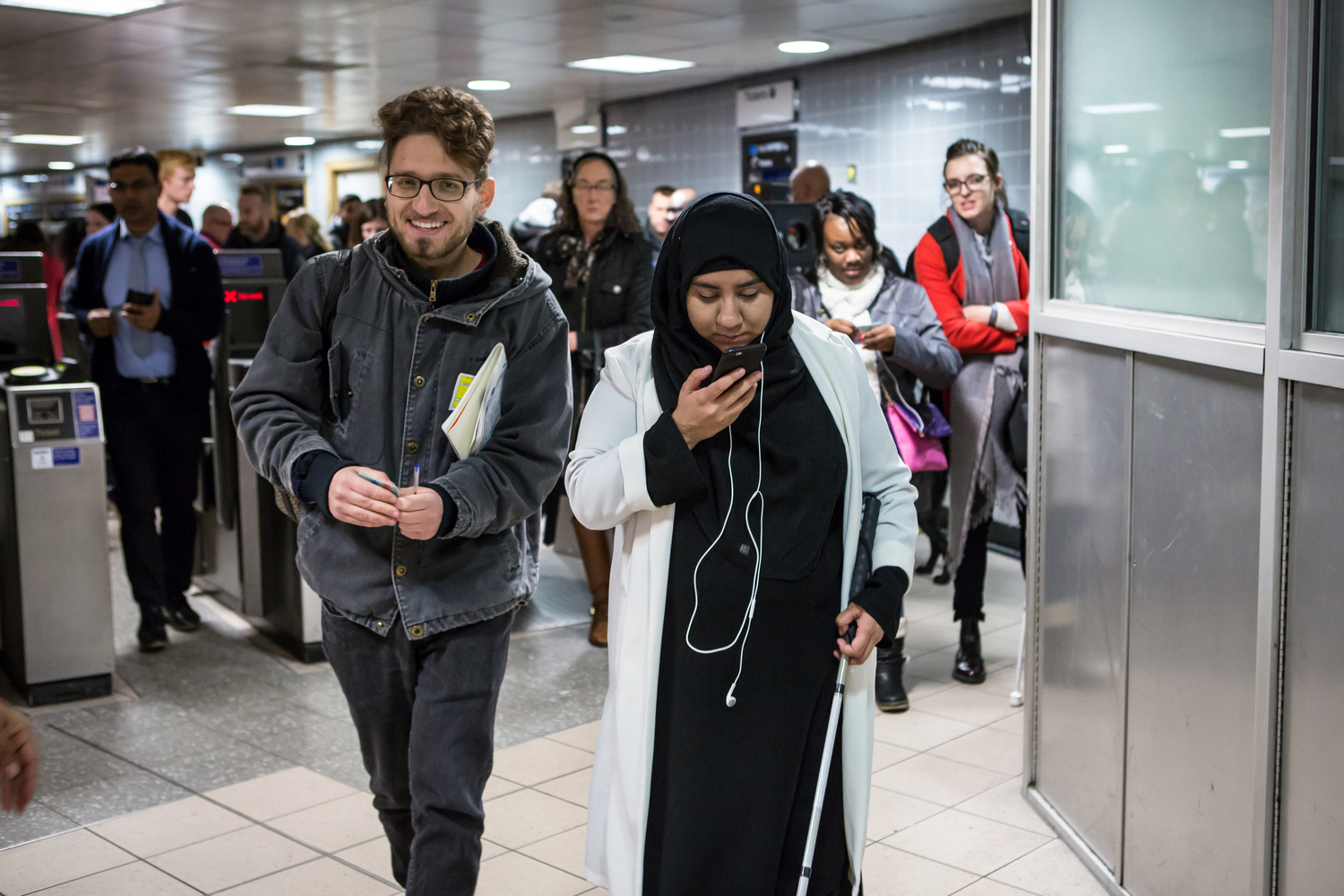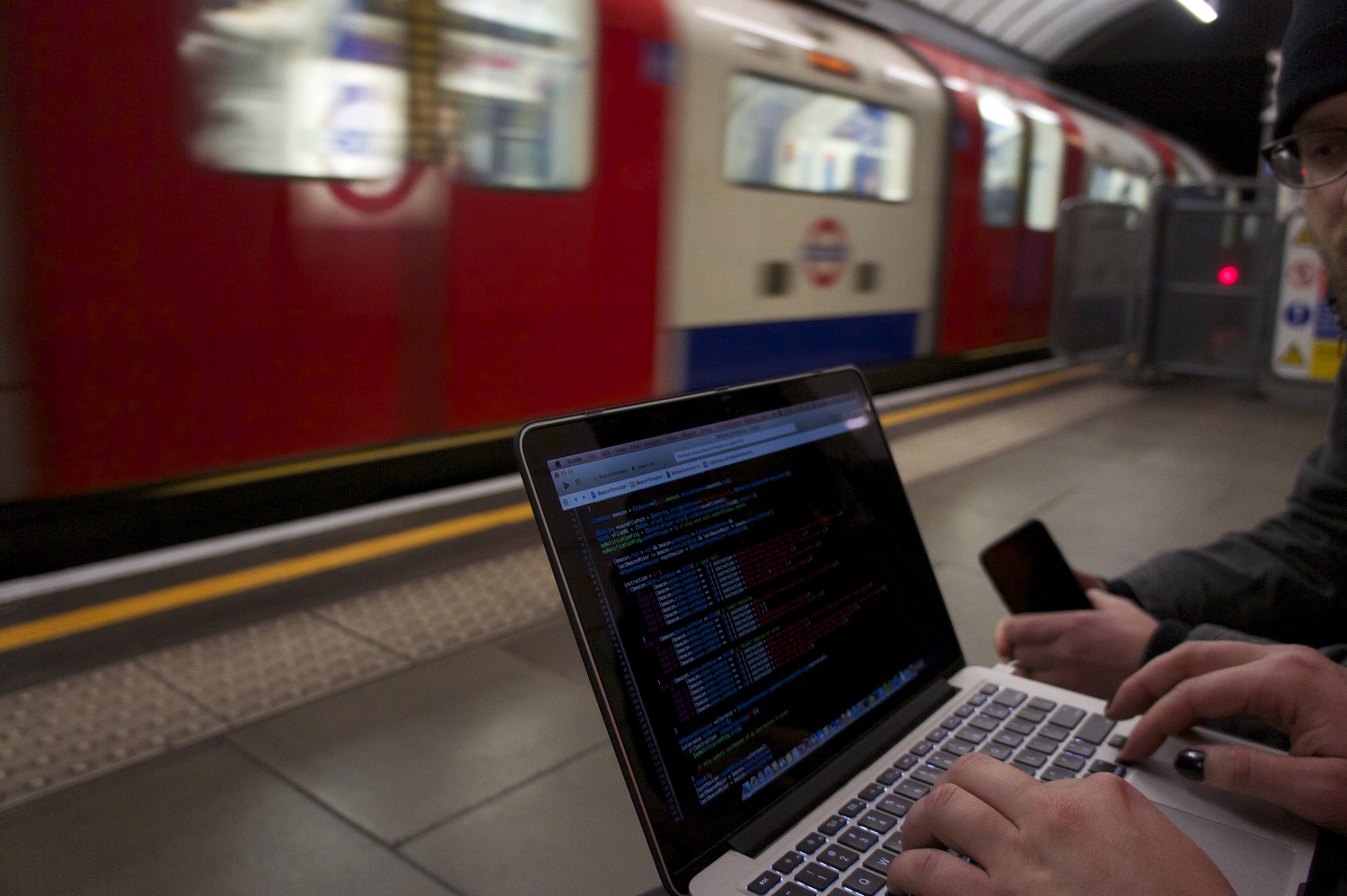Creating the Open Standard

When I talk about Wayfindr to people for the first time they always ask about the process of setting the standard. In this blog I will introduce how we are creating the first open standard for audio navigation.
The overall approach is based on the principles followed in a user-centred design challenge:
- Real users
- Real settings
- Real time iterations
Real Users
Whilst blindfolding ourselves, or wearing simspecs, to simulate sight loss is a good starting point. We can’t ever assume that this is the same as the experience of a vision impaired person.

We know that vision impaired people receive mobility and orientation training that help them establish their own navigation strategies, along with their primary mobility aids. They may also pay more attention to environmental stimuli: sounds, smells, air streams, people’s flow. These are things that cannot be easily experienced in a short-term simulation.
Like in any design task that involves uncertainty, we can’t claim we know everything related to vision impaired people’s information needs, navigation strategies, or behaviour. Our Standard development process is based on hypotheses that are being tested via rigorous user research.
To validate the Wayfindr Standard we involve people with sight loss throughout our Standard development process.
We observe and interview vision impaired people. We also give them the opportunity to try out audio instructions, and app features, that would be useful for a digital navigation service to adopt.
In our user research we try to validate hypotheses that might answer questions like:
- what do people need to know when they are approaching an escalator?
- what type of information is needed when someone is using a lift?
- how can we integrate the usage of tactile paving in audio instruction?
- how can we reassure people that they are on the right track?
- and many other questions phrased in the form of hypotheses
Here is an example of a hypothesis:
We believe that while on an escalator vision impaired people need to receive the next audio instruction when they reach the middle. This is so that they can plan their next move, and avoid having to stand in front of the escalator, blocking the people behind.
Real Settings
The first release of the Wayfindr Open Standard will focus on public transport, and more specifically train and underground stations. All the hypotheses we have made about people’s needs while they navigate public transport are being tested in the real context.

We are really grateful to have partnered with Transport for London who are allowing us to conduct research in London Underground stations. Guiding vision impaired people in a busy underground station reveals insights that we could not have learnt out of context.
The Open Standard will also include technology-specific guidelines, it’s wise to experience the technology in practice throughout the whole life-cycle from installation to maintenance. For example, installing Bluetooth beacons in an environment sounds like a straightforward task in theory, but in reality some thorough planning and effort needs to go into place. Before the installation we work with beacon manufacturers, most recently Alliance members Kontakt.io, to plan the placement of beacons, thus minimising the installation time on site.
If you would like to take part in our future research sessions, feel free to email us at research@wayfindr.net
Real Time Iterations
The way we run our research is in small iterative cycles. Instead of putting a lot of effort and time into something that might not be useful eventually, we try to get people’s feedback as soon as possible and iterate based on that.
We start small and we grow as our research evolves. For example, when we begin a live trial in a train station we initially focus on one return route. Once we get this right, in terms of audio instructions, and the Bluetooth beacon installation, we expand to support more routes. This allows us to test our hypotheses incrementally. During the trials the Wayfindr team are based at the station. This is so that we can iterate on audio instructions, beacon configuration, or functionality immediately, and then put it into testing a few minutes later with the next participant.

If, at the end of the trial, the hypotheses are validated, then they are translated into guidelines for the Open Standard.
These ways of working allow us to ensure that the Wayfindr Standard will provide the right tools to venue owners, and that digital navigation services will be inclusive.
Find out more about the Open Standard here.
Our team combines the digital product and user centred design expertise of ustwo, with the Royal London Society for Blind People’s 175 years of experience working with blind people.